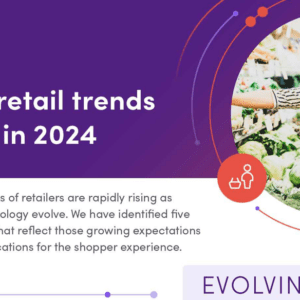A web site outage has been the biggest news out of Prime Day thus far, but Amazon is reportedly still riding the event to record sales. While social media was flooded with photos of the various “dogs of Amazon” displayed on error pages and reactions from disgruntled consumers,shoppers spent 54% more in the first three hours of this year’s event — 3 pm to 6 pm EST on July 16 — than in the first three hours of Prime Day 2017, when the shopping bonanza started at 9 pm, according to Feedvisor.
The 2018 increase has since skyrocketed up to 89% through the first 12 hours of Prime Day, while the number of orders increased 69% in the same period, the software company said.
Amazon was quick to acknowledge the outages, tweeting at 4:59 pm on July 16 that it was “working to resolve the issue quickly.”The e-Commerce giant has not addressed how widespread or long-lasting the outages were, or said what caused the problems in the first place.The glitch lasted until roughly 10 pm, according to research from Catchpoint, a web performance monitoring company.
Advertisement
Data from Feedvisor, an algorithmic repricing platform provider for online sellers with clients on Amazon, corroborates that the company bounced back after the early snag. There was a notable drop in sales at 4 pm, an hour into the sale and a point when many were complaining about outages, Feedvisor said. Sales recovered after that and were more than double the previous year before by 7 pm.
“The power outage is an indication of the excitement, the anticipation and the popularity that Prime Day has brought consumers,” said Natalie Kotlyar, Leader of Retail and Consumer Products at BDO in an interview with Retail TouchPoints. “The outage that Amazon has experienced is similar to the outage that Nordstrom experienced on the first day of its anniversary sale. I don’t want to say this is the norm, or expected, but I don’t think that it will deter the educated shopper that is looking for that bargain or the shiny object shopper. Shopping on Prime Day is an experience, and it still carries a ‘fear of missing out’ if you don’t shop.”
The 54% revenue boost through the first three hours is slightly below the sales growth rate of Prime Day 2017, which reached 60%. But the figure is well above the 40% projected increase to $3.4 billion that was estimated by Coresight Research and Digital Commerce 360.
“The volume of sales and performance in spite of the outages has been very impressive,” said Jess Hilton, VP of Client Partnership at Ansira. “It speaks to how embedded Amazon is to the natural consumer e-Commerce process in that a little bit of downtime is forgiven; the breadth of products and discounts is worthy of whatever the downtime is.”
Competitors Had The Opportunity To Take Advantage Of The Outage, But Did They?
In theory, the outage should have helped other retailers holding competing “Black Friday in July” promotions. As many as 76% of Prime Day shoppers visit other major online stores to research product ratings and reviews before making a purchase on Amazon, according to Bazaarvoice. Yet despite this unexpected advantage, Amazon doesn’t appear to have taken too great a hit.
“We’re in the middle of July and there’s going to be $3 to $4 billion in sales in a 36-hour period that is going to be at your fingertips whether you’re on vacation or not,” said Jim Fosina, CEO of Fosina Marketing Group. “You don’t have to go into a store or outlet to get these deals the way you might have to at 6 am on Black Friday. They have created, in the deadest time of the year, the second-highest purchase day of the year in the U.S. If there are other retailers out there that want to get into copycat mode, then they need to come up with a value proposition that makes the customer feel like it’s a necessity in their everyday life.”
Traditional Retailers And eBay Rely On Discount-Heavy Promotions
This year, it appears that other retailers are still focusing primarily on discounting to compete, while promoting the lack of membership fees as a convenience driver.
Macy’s took a direct shot at Amazon with a banner on its front page saying, “Look what you can get for under $119” — ($119 being the average Amazon membership cost per year). eBay did the same, giving coupons for all shoppers so they could save $25 on a minimum purchase of $119 (with the access code of PRIMO119).
Target is hosting a “One-Day Sale” on July 17, offering up to 30% off Google smart home products (a direct competitor to Amazon’s Alexa) as well as a free six-month membership to its same day shipping program with purchases over $100. eBay, Target and Walmart emphasized in their promotions that no membership is required to access their deals.
However, the success of Prime Day is now so engrained in the consumer consciousness that other major retailers must have a stronghold on competitive products, according to Ansira’s Hilton.
“Google products or Apple products where Amazon has a competitor, that’s where you’re seeing Walmart, Best Buy and eBay play up some of their discounted products or potentially higher rated products,” Hilton said in an interview with Retail TouchPoints. “Walmart and Best Buy may promote one of these products with a cheaper price when Amazon doesn’t promote it during Prime Day. It’s an interesting way to lure shoppers away, but at the end of the day, if you’re an e-Commerce purchaser, you’re still likely to leverage Prime Day where possible, versus if you’re more of a brick-and-mortar person, Walmart may still be your best bet depending on where you shop.”









